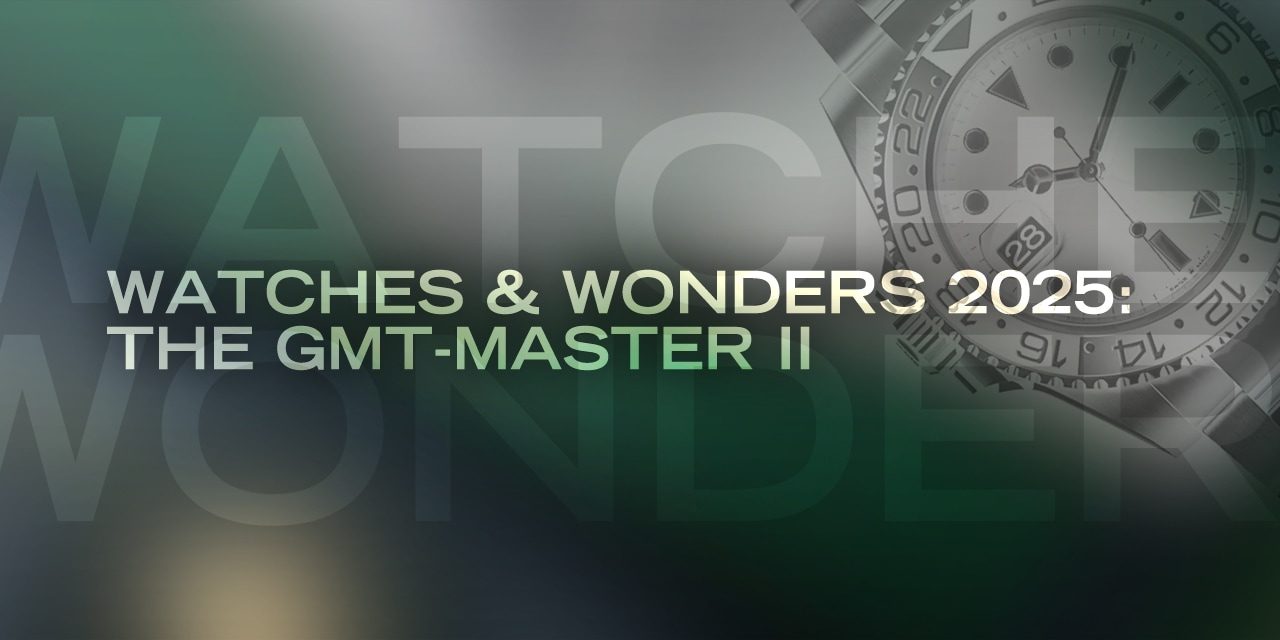All New Rolex Releases at Watches & Wonders 2025: The GMT-Master II
In 2022, Rolex pulled off their usual trick of throwing in a surprise to their annual reveal when they unveiled the GMT-Master II ref. 126720VTNR.
That year, as every year, cognoscenti had pinned their aspirations on the return of an old favorite or two. The main hope-rather-than-expectation gossip centered, as always, on the famous black and red-bezeled Coke variant staging an updated comeback.
Well, that didn’t happen (and we’re STILL waiting!), but what cropped up instead was actually a lot more radical than merely a fresh paint job.
The ref. 126720VTNR arrived with a black and green surround. It was not the first time Rolex had used green in the GMT collection; you can see it on dials and GMT hands in earlier incarnations. But this was the first time seeing it on a bezel.
So, the reference would have already been a noteworthy one. But what separated the soon-nicknamed Sprite even further from the rest of the pack was that it was a ‘destro’, meaning it was lefthanded.
As opposed to every other serially-produced Rolex, this one switched the crown and crown guards to the left side of the case and the Cyclops to the left side of the dial. It was aimed mainly at people who tend to wear their watches on their right wrist—sexy and devilishly handsome lefthanded folk. Like myself. It meant we could set and adjust the model without having to remove it, as we do with the vast majority of pieces.
But, although it was nice to be thought of, making a watch that would only feasibly be of any interest to about 10-12% of the global population (the estimated extent of lefties) it did seem like a recipe for poor sales.
However, that hasn’t transpired. The Sprite has been something of a hit. Not quite in Pepsi territory, but it has managed to carve out an appreciative niche for itself well beyond us leftists.
It probably shouldn’t have come as much of a surprise. If there’s one thing Rolex fans like it’s the unexpected novelty, and a reverse GMT is certainly that. Moreover, that new color scheme is very pleasant on the eye. And, let’s not forget, this is the granddaddy of the travel watch genre we’re talking about.
Well, turns out the Sprite has been so well received that this year Rolex decided to launch an additional destro example into the range, along with another two fresh models, all with intriguing dials.
The Rolex GMT-Masters 2025
The original Sprite came in steel with a black dial. For 2025, Rolex changed both of those aspects.
Before Watches & Wonders Geneva this year, some of us (yes, me included) predicted that the GMT might follow suit after the Submariner, finally up its time-worn dimensions and swap the 40mm Supercase for a more traditionally svelte but larger 41mm. And once again, we were wrong. (That’s ok, I’m used to it).
The watch retained the same muscley shell, but the new ref. 126729VTNR is cast in white gold—that’s what the ‘9’ indicates in the reference number. The VTNR stands for VerTe (green) and NoiR (black). Just FYI.
Now, hold Rolex white gold up to Oystersteel and the difference between the two metals is writ large but, to the uninitiated, they can be very easily mistaken for each other without reference. So, to avoid any confusion, Rolex has fitted this latest variant with a green dial too.
Green has always been an important color for the brand. It is, in fact, practically a company signature, much like Ferrari red. It is seen in the logo, the packaging and all over the official website. Rolex watches are shipped in green boxes and most ads feature the color somewhere.
In many ways, it is an obvious choice. In western culture, green is associated with money, status and prosperity—the very things luxury timepieces are designed to convey.
However, on their watches, Rolex only uses the color relatively sparingly, reserving it for milestone models or those which stand out in some way.
The 50th anniversary Submariner from 2003 had a green bezel, the first Sub to wear one, earning the nickname the Kermit. The follow-up from 2010 brought a green dial as well, becoming known as the Hulk due to the first appearance of the Supercase. Similarly, the 60th anniversary Day-Date also had a green dial, as did the yellow gold GMT-Master II launched to commemorate its half century in 2005. All were ‘special occasion’ pieces, reinforcing the message that green is arguably the most meaningful color within the brand’s DNA.
So we probably should not be surprised that in 2025, the model’s 70th year of unbroken production, Rolex decided to utilize the color again. Except, this time, it goes a little further.
Uniquely, the dial matches the bezel, in both shade and material. Whereas the previous Sprite had a standard brass-based, gloss black face, the one on the ref. 126729VTNR is in an identical hue to the lower portion of the surround and is cast in the same ceramic alloy, Cerachrom.
There’s actually a nice full-circle quality to the GMT-Master II being chosen to debut Rolex’s first ceramic dial. It was also the watch selected to unveil the original Cerachrom bezel too, back in 2005. The satiny, matte finish has a look all its own and, more importantly, instantly identifies the watch as the white gold example over the steel.
Inside, all is the same. Well, as in, the same as the other lefthanded GMT. The Sprites use the dual time zone Cal. 3285 movement as the rest of the range except, with the crown and date wheel on the opposite side, the caliber had to be reoriented. Easier than a complete redesign but complex nevertheless, it remains functionally identical, powering the four hands and granting a 70-hour reserve.
The ‘Other’ New GMT-Masters 2025
Overshadowed somewhat by the new destro, Rolex launched two other versions of the more conventionally oriented GMT this year as well.
A never before seen dial material has been used in a pair of solid gold models, the yellow and Everose.
Called Tiger Iron, it is a fascinating and infinitely varied substance made up of three main minerals; Tiger’s Eye (a gold/brown quartz), hematite (a metallic grey or black iron oxide) and Red Jasper (another type of quartz, this one an earthy red).
Tiger Iron, while rare, is found mostly in Western Australia, as well as in South Africa and Brazil. Starting out with the fibrous Tiger’s Eye in sedimentary deposits, over time the hematite and jasper are introduced into the environment by way of mineral-rich waters seeping through the rock. These are all bound together with heat and pressure over millions of years, forming unique bands of alternating stripes of gold, grey and red.
Tiger Iron has been used in jewelry making since the middle part of the last century, experiencing a boom in the ‘80s and ‘90s. It also became especially popular among the New Age crystal and healing stone communities in the 2000s. But this is the first instance of Rolex using its charms in their watches.
Each dial sliver is chosen with the same obsessive level of attention to detail that Rolex uses to choose any of its semiprecious stone or meteorite materials. And as with those, the addition elevates the visual distinctiveness of the gold GMTs.
On the yellow ref. 126718GRNR, with its Bruce Wayne black and grey bezel, there is a definite, eye-catching contrast between metal and dial. On the Everose, with its Root Beer-esque brown and black surround, the colors of the stone blend in much more harmoniously. Each will find its audience depending on individual sensibilities, but both are wonderful to look at.
The GMT-Master II releases from this year’s W&W are certainly an interesting collection, and not what anyone was expecting. I’ll guess we’ll just have to wait until next year before we finally see the new Coke. Which is DEFINITELY coming in 2026!
Featured Photo: Mixed art by Oriol Mendivil for BKT Archive.






